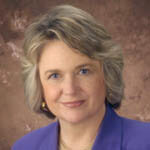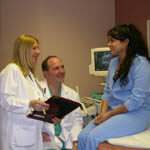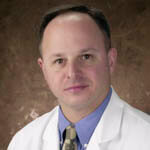San Antonio (March 26, 2004) – San Antonio this month made the list of the 100 Worst U.S. Asthma Cities, coming in at No. 81. Although cedar fever season is nearly over, a bunch of spring pollens are circulating in full force in the Alamo City, causing breathing problems for many.
“Mountain cedar is bad in San Antonio because it is in such high concentrations, but it can be any pollen that triggers an allergic reaction in the asthmatic individual,” said Autumn Dawn Galbreath, M.D., assistant professor of medicine at The University of Texas Health Science Center at San Antonio and program director of the Health Science Center’s South Texas Asthma Management Program (STAMP). “Molds are another common trigger because so many people are exposed to them. With all the wet weather in the spring, leaks can develop in the home and molds can grow, and that can cause airway flare-ups.”
The STAMP seeks to assist asthma patients, families and their physicians with education, outpatient resources and access to health care personnel. The study is comparing various degrees of intervention to determine whether more aggressive monitoring of asthma, including home visits from health care providers, will prevent attacks and visits to the emergency room. The goal is to provide objective data about asthma disease management to the federal government for effective decision making concerning programs to help Medicare and other beneficiaries.
Dust mites are another strong asthma trigger found in every home, school or office. “They are ubiquitous,” Dr. Galbreath said. “The more dust mite exposure a sensitive patient has, the more difficult it is for him to control his asthma.” As the pollen level increases outside, people move inside to protect themselves, so they spend more time around the dust mites, particularly at home, she said. Eighty percent of patients with asthma test positive for dust mite allergy, according to the American Lung Association.
Cockroaches are a huge asthma trigger, shedding or emitting proteins that can cause allergic reactions. “It’s kind of like cat dander,” Dr. Galbreath said. “The cockroach can spread a microscopic allergen that tears up some people.” In one study in Louisiana, 61 percent of homes had levels of cockroach allergens high enough to trigger asthma.
As pleasant as the South Texas spring is, it is full of potential triggers. These include humidity, rain and temperature changes; increased exercise outdoors; mowing the lawn and other yard work; and walking or playing with the dog. And as we move into ozone action days, the issue of air pollution again moves to the forefront.
“The terrible thing about asthma from the sufferers’ point of view is that there are triggers year-round,” Dr. Galbreath said. “That’s why it’s important to manage your disease 365 days a year. We are confident our study will underscore that importance.”
The STAMP study is looking for Hispanic, African American and Caucasian patients from San Antonio and surrounding counties. To enroll or for more information, please call (210) 567-9700 or toll-free 1-888-699-4877.
“There are very high-quality and effective medications available for asthma and allergies,” Dr. Galbreath stressed. “Multiple studies have demonstrated that they reduce or even eliminate asthma symptoms. The problem for some parts of our population is getting access to them. Therefore some researchers are turning their attention to studies to improve access to care for people with asthma. One group of those researchers is conducting the STAMP study at the Health Science Center.”





